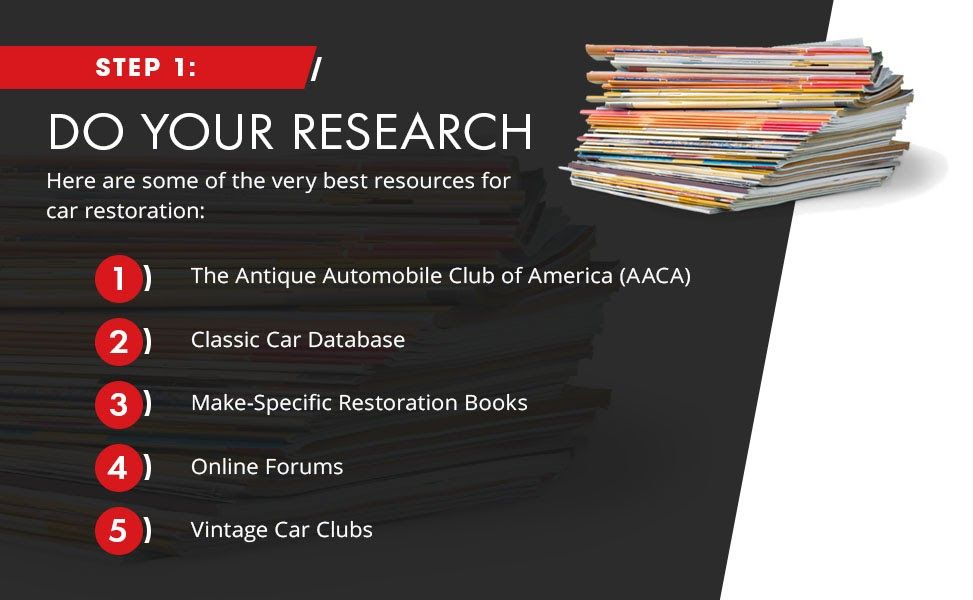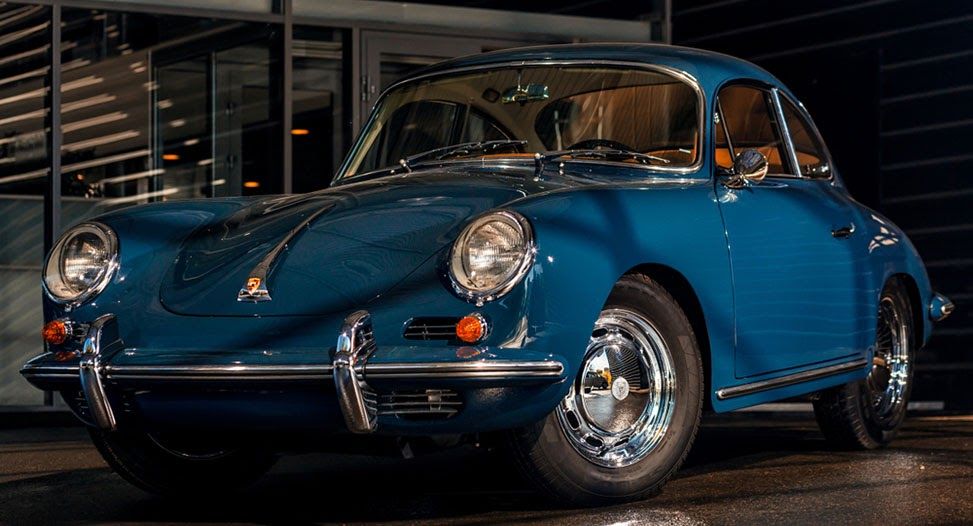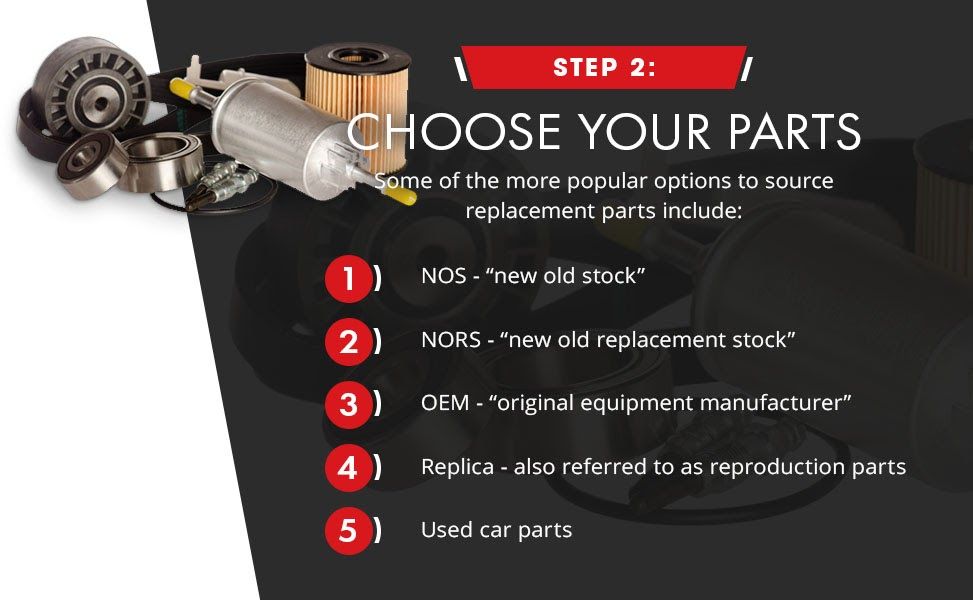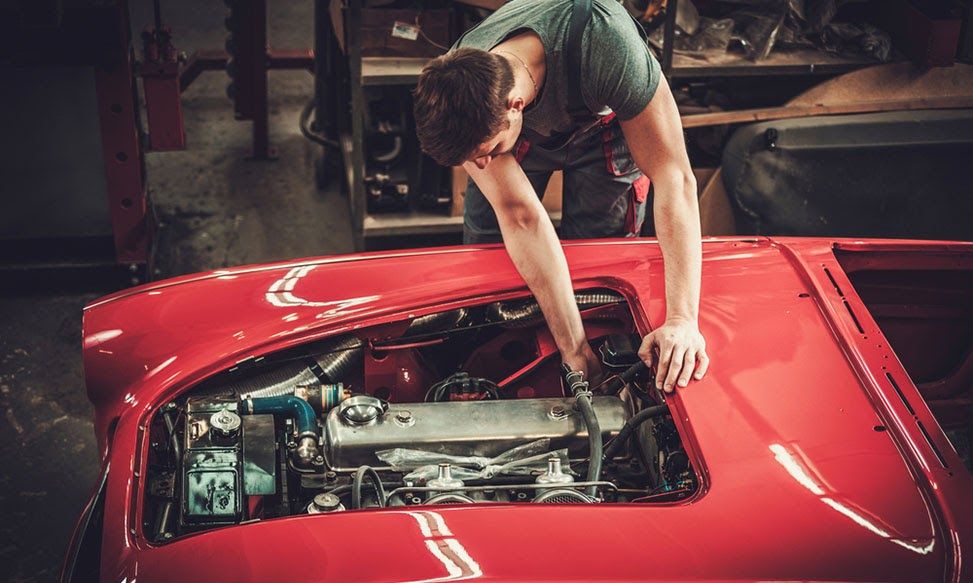
How to Restore a Classic Car and Other Maintenance Tips
They don’t make ‘em like they used to. Car aficionados know that sentiment better than anyone, which is why many of us are so hung up on the classics. From show-stoppers like the original Italian supercars to antique autos that appear to have just rolled off Ford’s assembly line, classic cars have a way of turning heads. And, as we all know, that’s especially true when the paint is shiny and the fenders are gleaming.
These days, we’re experiencing a gradual but predictable shift in the types of cars being restored. In addition to all-time classics—muscle cars, European sports cars, antique cars, old-school sedans—we’re seeing a ton of interest in the “daily drivers” and utility vehicles of the 80s and 90s. Where it was once all about the Mustang, the 911, or the James Bond car, now it’s not uncommon to see pristine examples of early-gen Jettas, E30s, and Tacomas on the road. And we’re loving it.
So, what we’re saying is, every old car is worthy of restoration, whether it seems so at face value or not. And, let’s be honest, some of those “basic” rides from 30 years ago were pretty dang cool. If you’ve got a restoration project in mind, we commend you! Though it will take a lot of hard work and a nice chunk of change, it is one of the most rewarding hobbies there is. Your prize is a drivable trophy that represents your hard work, ingenuity, and exceptional taste.
Every Restoration Project Is Unique
There’s one major problem, however: There’s no one-size-fits-all manual for how to restore a vehicle, and every car—and every owner—is different. Your restoration plan will change based on a few key factors. Importantly, it will depend on the current state of the vehicle and what needs to be done. Meticulously restoring a rusted-out clunker is a lot more time-consuming than freshening up a car that was garage-kept, covered, and babied for most of its life.

Additionally, your plan will vary based on your comfort level with DIY tasks and your specific goals. If you plan to obsess over authenticity and want every piece to be original––more on this below––you’re going to need to frontload your restoration project with a ton of research and be willing to spend extra time digging through automotive graveyards sourcing hard-to-find original parts. This is a time-consuming endeavor best left to those with ample spare time.
And then, of course, there’s your budget. In the U.S., the estimated average cost of a car restoration is somewhere between $30,000 and $40,000. Unfortunately for those of us who love old whips, this isn’t a cheap hobby. But, like anything in life, how much you spend depends on how much work needs to be done and how detailed the restoration is going to be. Many people restore old cars in piecemeal fashion to help parcel up the budget and minimize the time spent—engine this year, exterior next year, and so on.
Shop Our Entire Selection of Car Covers
Step 1: Do Your Research
If you’re a car guy or gal, you’ve likely already done plenty of research on the car you plan to restore. Flipping through old manuals, manufacturer literature, car magazines, and websites will be crucial to ensure that the final project looks authentic. It’s also important to try to see fully restored, top-level examples of your project car in real life. Many makes have restoration clubs and gatherings specifically for enthusiasts, and nothing beats a good old-fashioned car show.
Getting connected with others within your specific community will help you with hard-to-solve problems like where to source parts or how to attack specific issues. It’s also a great way to get some solid information on how much is a realistic amount of money to spend on your project, as well as what kinds of tools and car maintenance essentials you’ll need. Here are some of the very best resources for car restoration:

- The Antique Automobile Club of America (AACA) – The AACA has been supporting the preservation of automotive history since 1935. The organization’s forums as well as its library and research center are quite useful for those looking to get information about specific cars. The AACA library has nearly two million pieces of sales literature, photos, owner’s manuals, and clippings, so it’s definitely worth checking out for the most authentic restoration jobs.
- Classic Car Database – If you need information on all-American antique, vintage, classic, and muscle cars, the Classic Car Database can help. Though relatively bare bones, this online resource can provide you with detailed information on specific pre-1975 models, including everything from original sale prices to the size of the wheelbase on your specific ride.
- Make-Specific Restoration Books – There are tons of car restoration manuals specifically for the make and model you’re restoring. Look for manuals and car techbooks by Haynes, CarTech, Motorbooks Workshop, California Bill’s Automotive Handbooks, HP Books, and more. The good news is, these guides tend to be quite affordable, so you can build up a library with everything you need for a relatively low price and always have answers on-demand.
- Online Forums – We cannot underestimate the value of a good community of car enthusiasts! Whether via Facebook, Reddit, or a make-specific website, your fellow restorationists will have a ton of information for you on how to go about things the right way. They can also point you in the right direction of lesser-known sources for parts and advice.

- Vintage Car Clubs – Nearly all of the most popular vintage makes have a dedicated following of restoration fanatics, so there’s a good chance there’s a group of in-person enthusiasts in your area. Search Google for local clubs or reach out to national societies to help you get in touch with local club members who can help you along the way.
Step 2: Choose Your Parts
There are a couple of approaches you can take when restoring classic autos, including era-correct restoration or modified restorations where you focus on restoring the main features of the vehicle but add upgrades like a faster engine or a different transmission type.
In classic car restoration, parts are everything, and they make a huge difference in your restoration approach. Since many of the ones on your existing vehicle will need to be swapped out, you have to decide how you’re going to go about sourcing their replacements. You may want to keep your restoration as pure and authentic as possible, sourcing only brand-new factory parts, or you may be just fine with reproduction parts. Some of the more popular options include:

- NOS – NOS stands for “new old stock.” These parts are the most highly sought after—and, in turn, the most expensive—kinds of parts among restorationists. These are original parts which were made long ago by the manufacturer but were never used, meaning they’re the most authentic and most likely to work in a like-new fashion, though many come out of rusty warehouses and old barns, which can compromise their condition. Since these are considered the “holy grail” of restoration parts, they can be quite hard to find.
- NORS – NORS stands for “new old replacement stock.” These are end-of-run automotive parts made after a certain vehicle has stopped being produced, so they were intended for aftermarket use to replace original parts. They are generally packaged and branded under the name of the parts manufacturer, not the automotive manufacturer. As era-correct replacement parts, these parts are considered a kind of middle ground between NORS and OEM parts, in terms of popularity and cost.
- OEM – OEM stands for “original equipment manufacturer.” They are not original parts, but they are made by the same manufacturer that originally created the part for the car maker or by a manufacturer that has licensed the reproduction of specific parts. These parts usually pop onto the market when the original manufacturer has stopped producing the original ones but demand from collectors or restorationists is still high. Though they may function the same, they often look quite different than the original. This makes them significantly more affordable.

- Replica – Also referred to as reproduction parts, jobber parts, or remanufactured parts, these parts are simply the ones that have been produced by third-party companies to match the factory parts. These parts are not licensed by the car manufacturer, which means they can be a bit sketchy in terms of fit, aesthetic, and function. Because of this, they are the most budget-friendly option.
- Used – We’ve all seen vintage car graveyards on the side of the road—fields filled with empty shells of vehicles, seemingly with nothing left but a part of the body and a wheel or two. These are considered “parts cars,” and their purpose is to supply other, better-equipped vintage cars with original parts or hard-to-find components, such as interior detailing, trim pieces, or fasteners. This is a cost-effective way to get a vehicle shaped up fast, but it may not offer the same reliability as NOS, NORS, or OEM parts.
Step 3: Create a Plan and Timeline
Now that you’re armed with all the best resources for spiffing up your vehicle, it’s time to start strategizing. Remember that restoration projects are unpredictable and no two are alike, so it’s important that you create a strategy based on what your vehicle demands. Adjust your project’s needs based on the condition of your car, your budget, and your timeline.

- Do a Thorough Inspection – The best thing you can do to kickstart your restoration project is to give your vehicle a thorough inspection. Inspect every element of the vehicle, from the engine and transmission to the floorboards and electrical components inside. Of course, now’s the time to take your “before” pics! And do your best to keep a detailed journal documenting the condition and specifics of every piece and part of your vehicle.
- Invest in the Right Tools – If you intend to do some of the work yourself, make sure you have the proper tools in the garage. You will need basic everyday hand tools, such as screwdrivers, pliers, sockets, etc. You may also want to consider investing in more specialized automotive repair staples, such as a floor jack, welder, sheet metal scissors, and an engine crane and stand. This is a good idea if you plan to restore multiple cars yourself in the future.
- Get Quotes – Even the handiest car aficionados sometimes have to outsource a part of the job, so don’t be afraid to turn to the professionals for all or a portion of your project. We always recommend getting quotes from pros before you begin the project to ensure that the costs of restoration are within your reach and to rule out any potentially deal-breaking issues or repairs.
- Create a Maintenance Plan – It would be such a shame to put so much time, money, effort, and love into your spiffy new restoration only to have it succumb to the elements or sustain damage due to neglect. Make sure you have a plan for how to cover your classic car so it stays safe from weather, pests, sunlight damage, and other common threats. And don’t forget to put it on a routine maintenance schedule with a mechanic you trust!

Enjoy the Ride
When it comes to old vehicle restoration, it really is more about the journey than the destination. And isn’t the journey what it’s all about for car-lovers, anyway? Make sure you spend your restoration period enjoying what you’re doing—tinkering, experimenting, and accepting every failure as an opportunity to learn. As your source for the best indoor car covers for classic cars, CarCovers.com is here to help support you every step of the way, from the original inspection to that first fully restored ride.
Updated